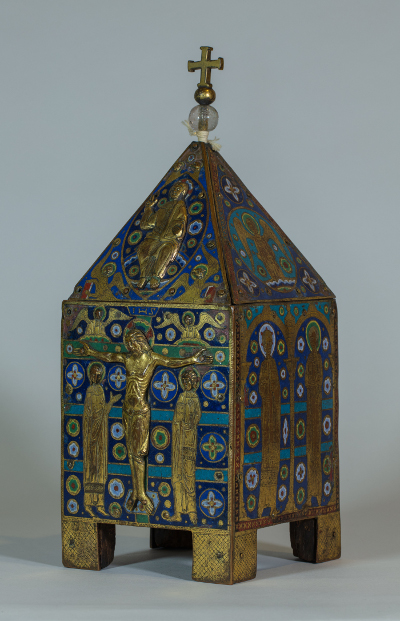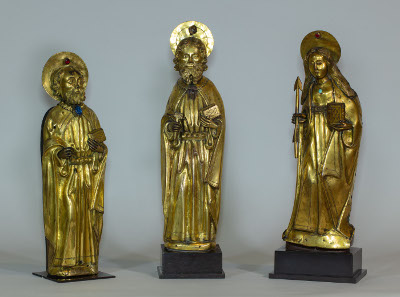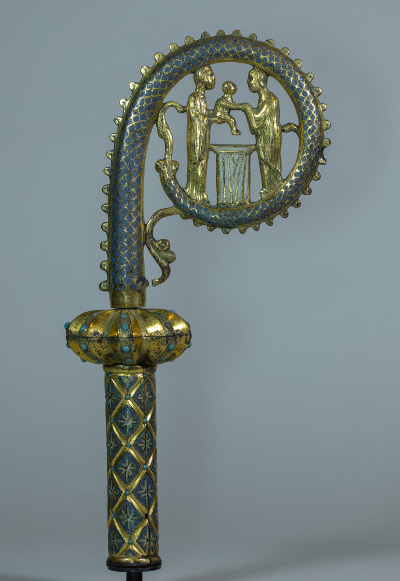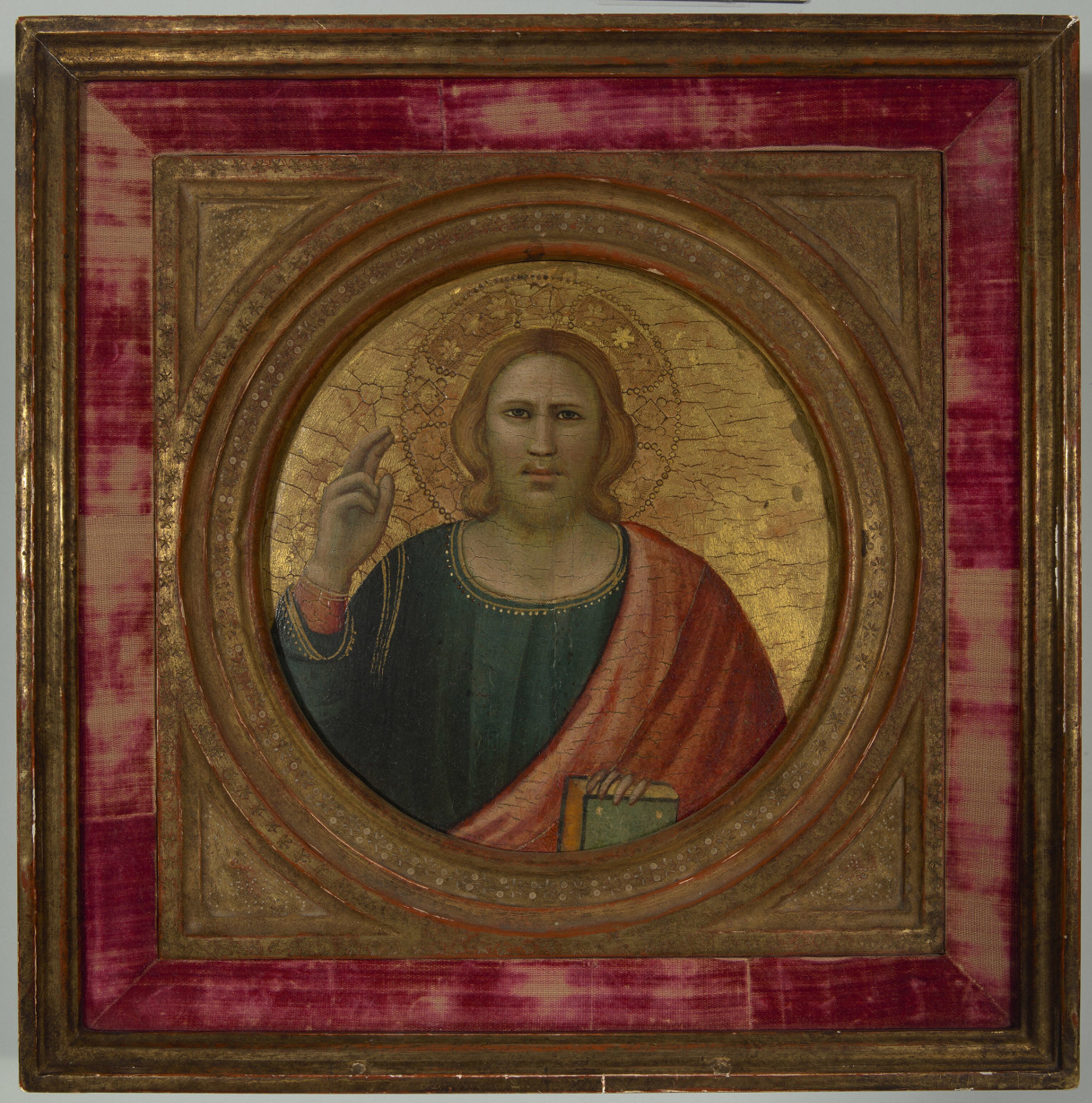
Limoges Enamel Tabernacle
Limoges Enamel Tabernacle
Limoges Enamel
13th century CE
14 3/8 x 7 1/2 x 7 1/2 in. (36.5 cm. x 19 cm. x 19 cm.)
Wyvern Collection
This tabernacle once functioned as a reliquary container for saints’ bones or other sacred Christian remains. These precious objects were believed to possess particular power, and even the ability to produce miracles. They were therefore often displayed and venerated during Christian processions and masses. The enamelwork illustrating the four Evangelists, St Peter, angels, a crucifixion scene, and the Blessing Christ would have glittered in the church candlelight, further intensifying the mystery and perceived power of the concealed relics. Given that the depicted imagery relates to the Passion, it has also been suggested that tabernacles of a similar nature were liturgical aids for the eucharist.
(B. Wrubel)

Statuettes of St. Ursula, St. Peter, and St. Paul
St. Ursula Statuette
Italian, ca. 1400
Gilt copper, glass gems, wood core
Wyvern Collection
St. Peter Statuette
Italian, ca. 1400
Gilt copper, glass gems, wood core
Wyvern Collection
St. Paul Statuette
Italian, ca. 1400
Gilt copper, glass gems, wood core
Wyvern Collection
These three statuettes of St. Ursula, St. Peter, and St. Paul once served as church altarpieces- sculptural representations of holy saints displayed in niches or chapels for both decorative purposes and as objects of worship. The matching decorations and style suggest these three statuettes once belonged to the same altarpiece. All are gilded and ornamented with gems to evoke their sacred nature as icons, or sacramental images used for religious worship. Medieval Christians believed in the miraculous and communicative powers inherent in icons. Worshipers would kneel before these statuettes to pray or in reflection, with the hope that the saint depicted would receive their messages and perhaps intercede or respond with guidance.
(B. Wu)

Limoges Crosier with the Presentation in the Temple
Limoges Crosier with the Presentation in the Temple
Limoges
13th century CE
15 3/4 in. (40 cm)
Wyvern Collection
The crosier was commonly used during Church ceremonies, especially at the consecrations of a bishop, and during processions or masses as a sign of the bishop’s authority and power. There is a sense of duality in the crosier. This is shown through the notion of spectacle in the iconography of the piece itself, which shows the presentation of Christ in the temple, as well and the physical use the actual crosier by the bishop during public ceremonial events. The crosier was considered to be a representation of both authority and jurisdiction. This crosier was made in the city of Limoges, which was well known in the medieval period for creating enamels.
(M. Brown)

Christ Blessing
Christ Blessing
Allegretto de Nuzi
Italian, ca. 1360
Tempera on panel
7 3/8 in. x 7 1/8 in. (18.7 cm. x 18.1 cm.)
Gift of the Samuel H. Kress Foundation, 1961.100.4
This triptych, originally a portion of a larger polyptych (altarpieces with multiple panels), is in a very fine state of preservation. When first completed, the tondo might have been part of the frame of the larger altarpiece, in which it would presumably have graced the gable of the central panel. Art historian Roberto Longhi identified the work’s “simplicity and amplitude of shape” as telling signs of Allegretto Nuzi’s training in Florence in the 1330s, under the strong influence of Giotto. Despite the small scale of this painting, the half-figure of the haloed Christ in the act of blessing possesses monumental dignity. Nuzi’s panel depicting Saint Anthony Abbot, a wing of a major altarpiece for his hometown of Fabriano, is today in the National Gallery of Art, Washington D.C., and, like this work, a gift from the Samuel H. Kress Foundation.
(Museum)



